Boston Warehouse Spreader Design Periods
When studying the art of a particular artist, especially one who worked over a long period of time, it’s common to divide the artist’s work into periods that show distinctive characteristics as the artist’s skills and interests evolved.
Boston Warehouse issued more than 900 spreader sets over a roughly 25-year period. As I’ve worked on cataloging all of them, I’ve noticed that some of the design characteristics of them changed in observable ways over the years.
I’m not certain what caused these changes:
- if this was due to different graphic designers working in-house at the company who influenced their design,
- whether it was in response to changing availability of paints or other technology in manufacturing them,
- or whether the company was simply responding to changing customer tastes and cultural design trends
- or, likely, all of the above
For whatever reason, there are definitely some distinctive design trends. I’ve divided these trends in Boston Warehouse spreader set design into four design periods:
- Early Period (1993-1997)
- Middle Period (1998-2006)
- Late Period (2007-2015)
- Modern (after 2015)
I’ll illustrate the changes apparent in each of these period with images from my Boston Warehouse Spreader Database:
Early Period (1993-1997)
During the roughly five-year Early Period, from 1993 (the year that Boston Warehouse issued its first spreader sets) until around 1997, BW spreader designs were largely marked by the following characteristics:
- relatively flat paint colors
- an absence of shiny metallic paint, sparkles or realistically depicted clear glass (due to cloudy resin)
- intricate molded details in the polyresin
- simple, common themes of holidays, foods, animals, and people such as waiters
- cardboard cases were mostly plain dark green
Here are half a dozen pictures of representative sets from the BW Early Period, that illustrate these characteristics:
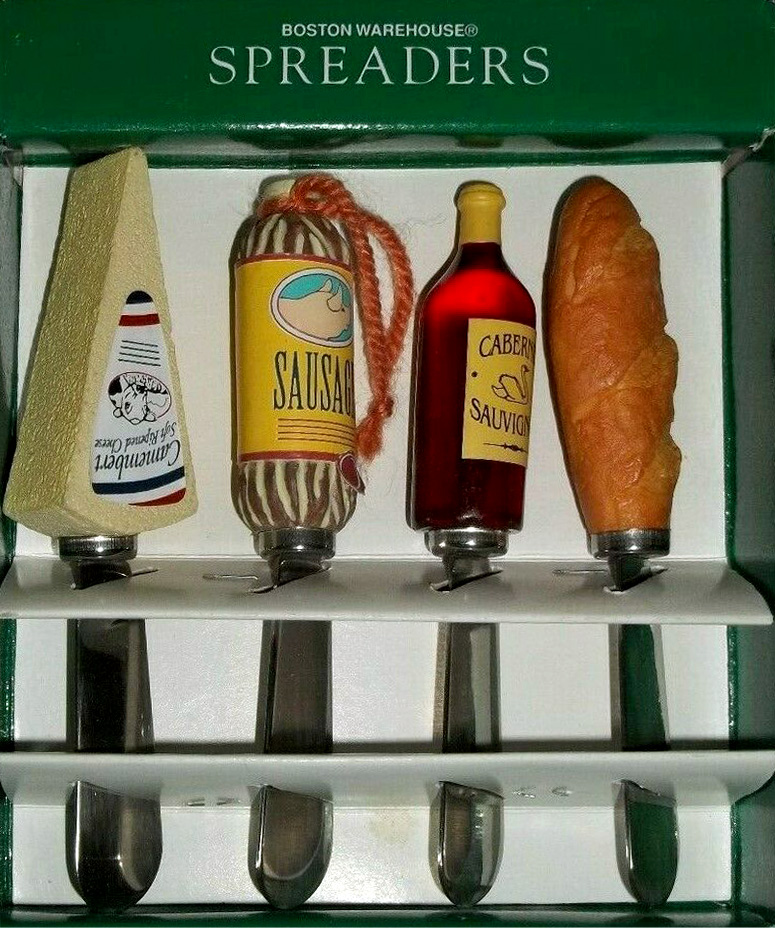
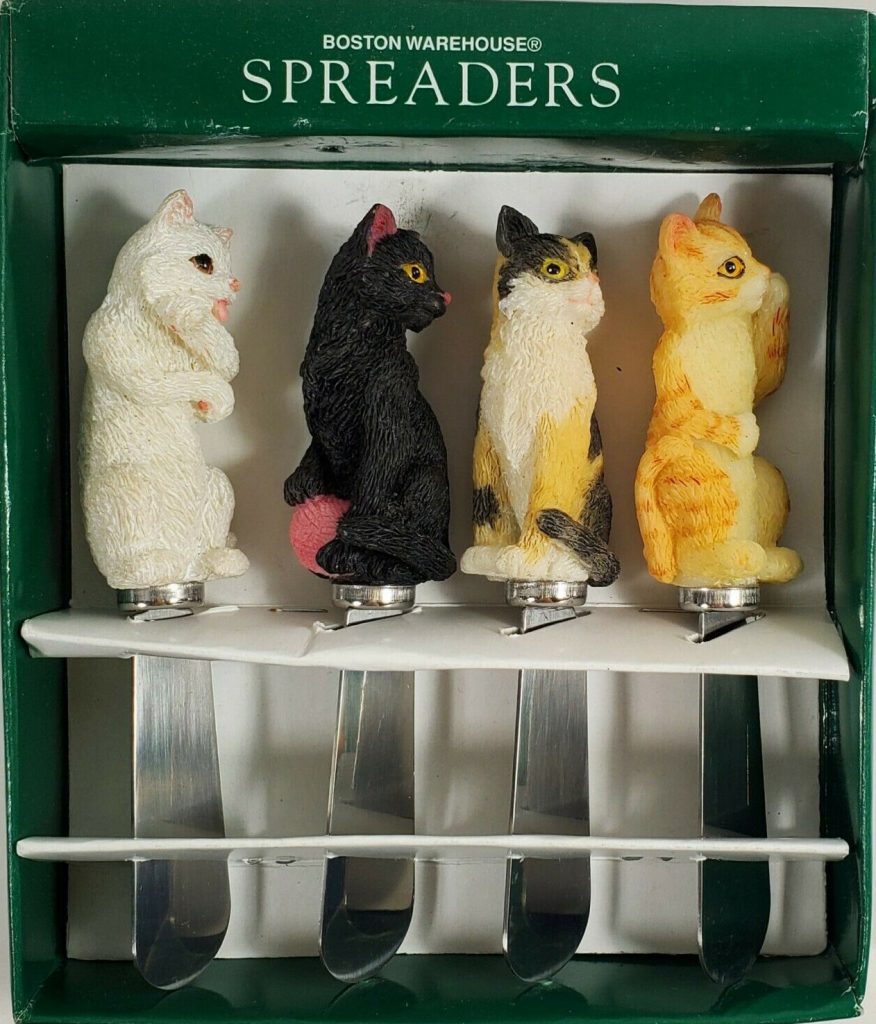
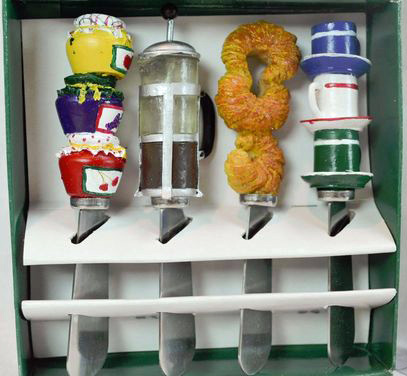
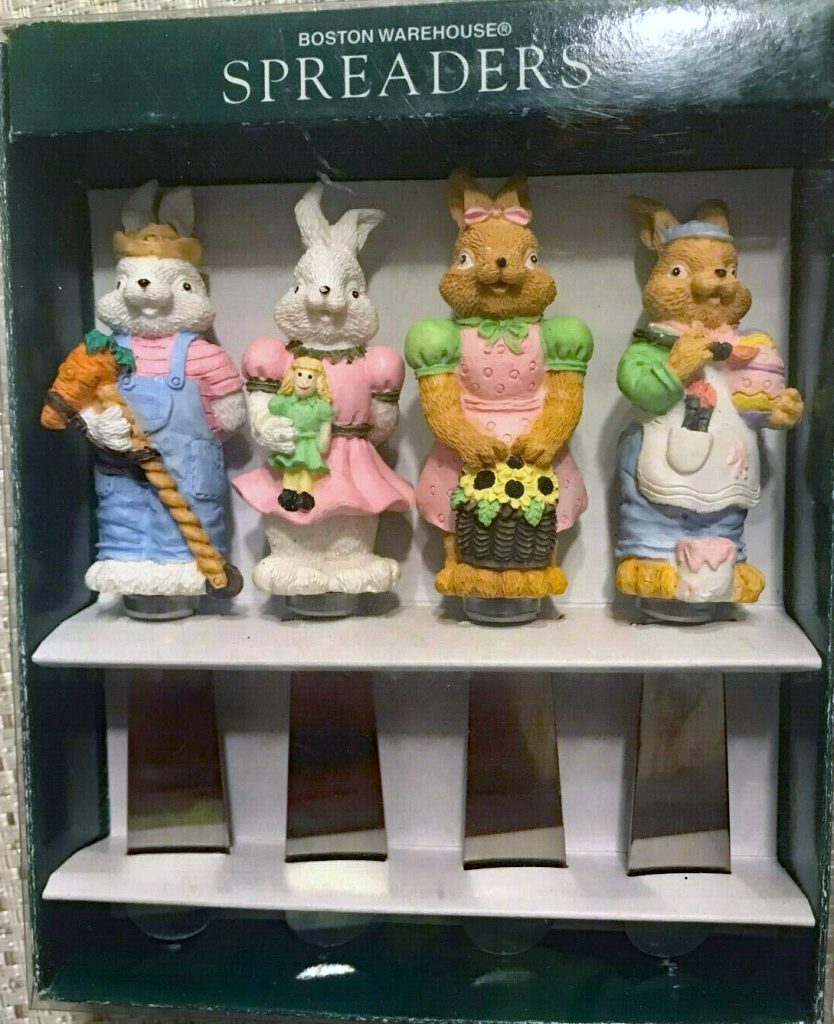
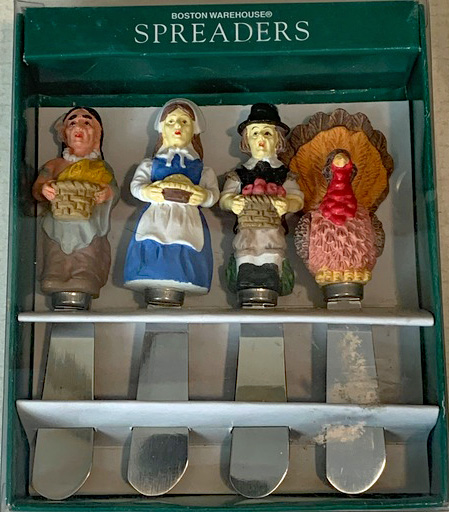
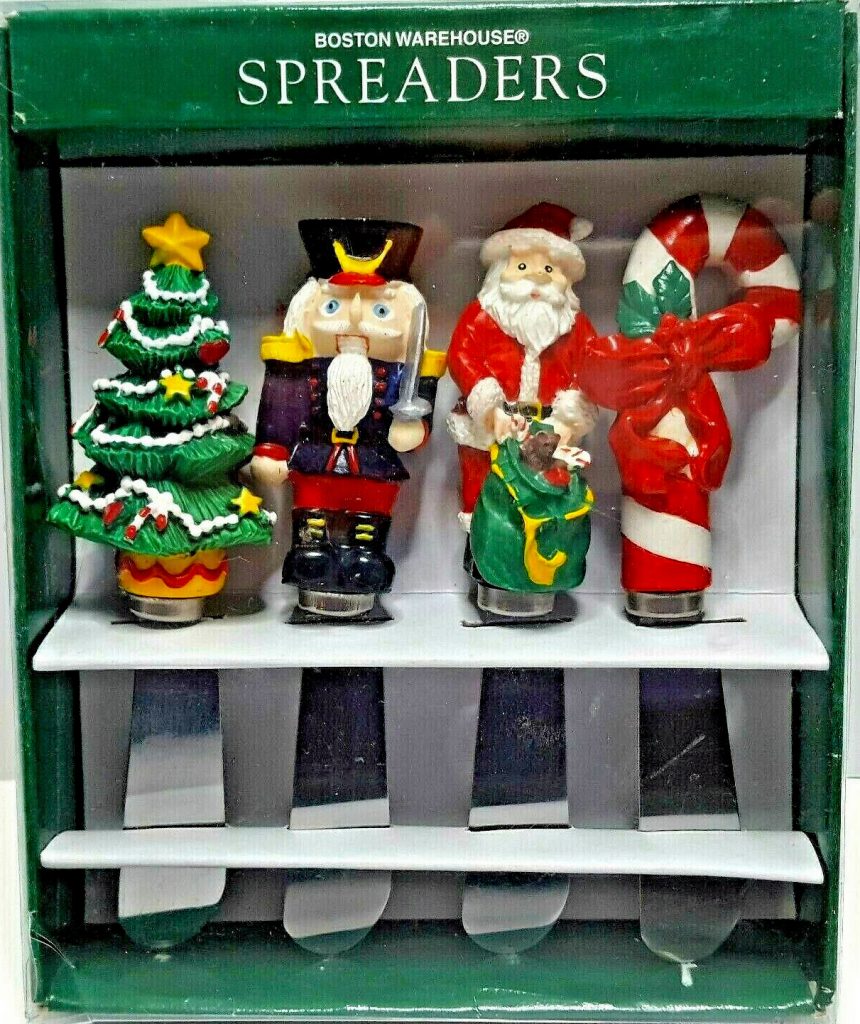
Boston Warehouse issued probably around 100 different designs during the Early Period. Not every set conformed strictly to these trends — there were some exceptions. And some sets issued near the end of this period began to show the characteristics that were to appear in the Middle Period, detailed in the next section:
Middle Period (1998-2008)
The Boston Warehouse Middle Period was a long period of eleven years, over which BW issued at least 300 different spreader sets (and probably closer to 500 different sets, since I don’t have dates for a third of the sets in my database).
In my opinion, many of the most well-designed — and delightful — of the BW sets were issued during this Middle Period. The BW Middle Period was marked by the following developments and refinements in style, design and subject:
- glossier paint, in brighter colors
- paints with metallic sheen
- realistic depiction of glass using clear resin that did not turn cloudy
- a continuation of the intricate molded details in the resin handles
- humorous, clever and sophisticated subject matter, in a wide range of subject areas
- the engagement of notable American artists and designers to design sets for the company
- the issuance of several dozen spreader houses to hold matching themed spreaders
- cardboard cases were more brightly colored, often with marketing graphics (although some sets were issued in plain brown cardboard cases too)
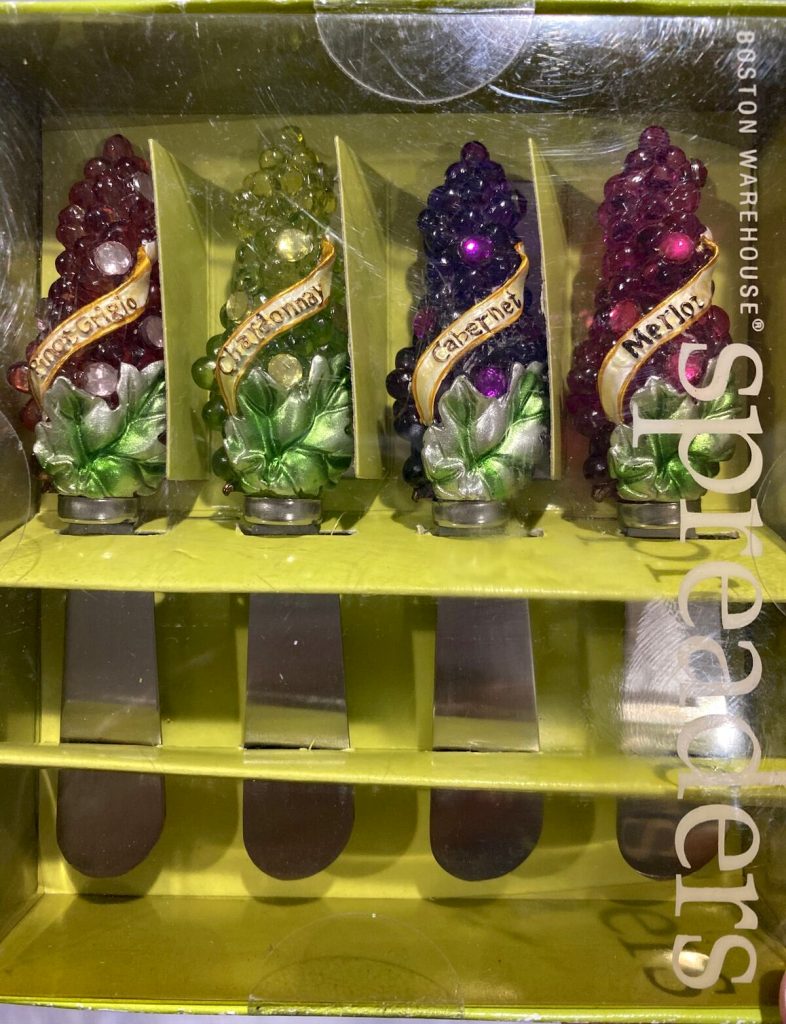
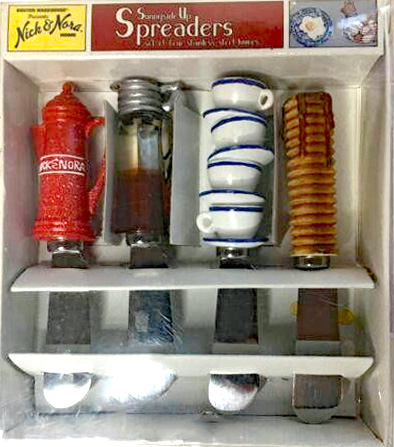
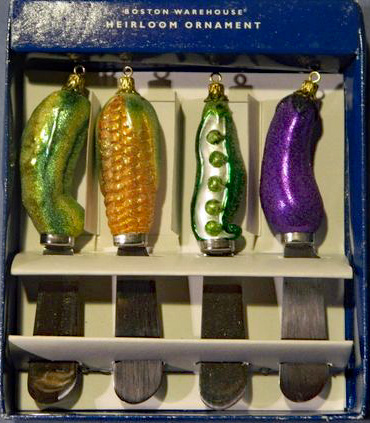
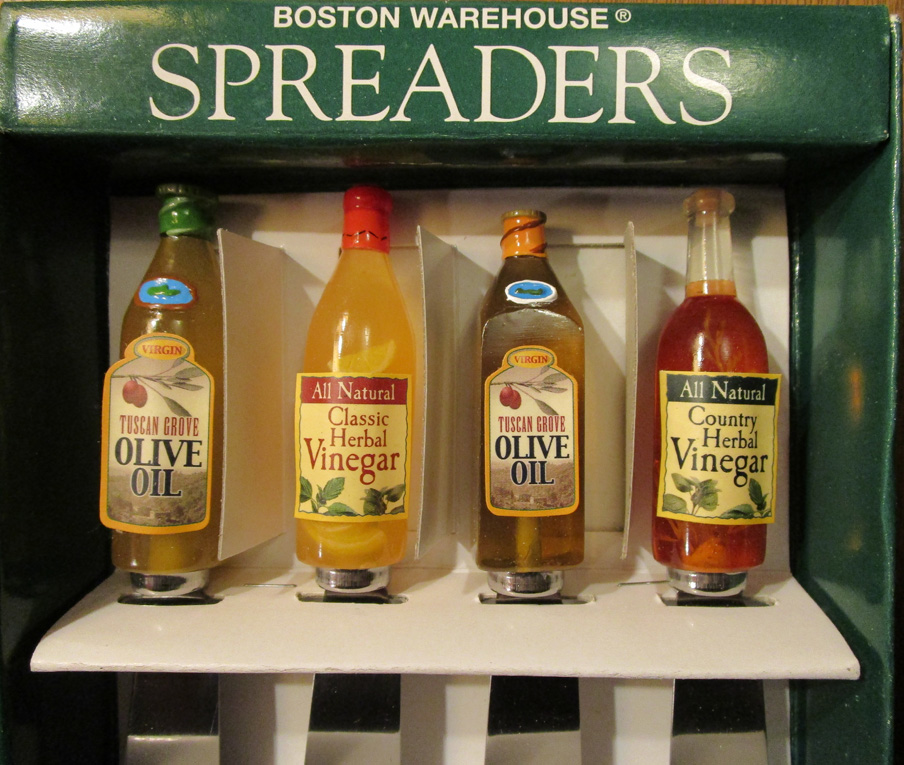
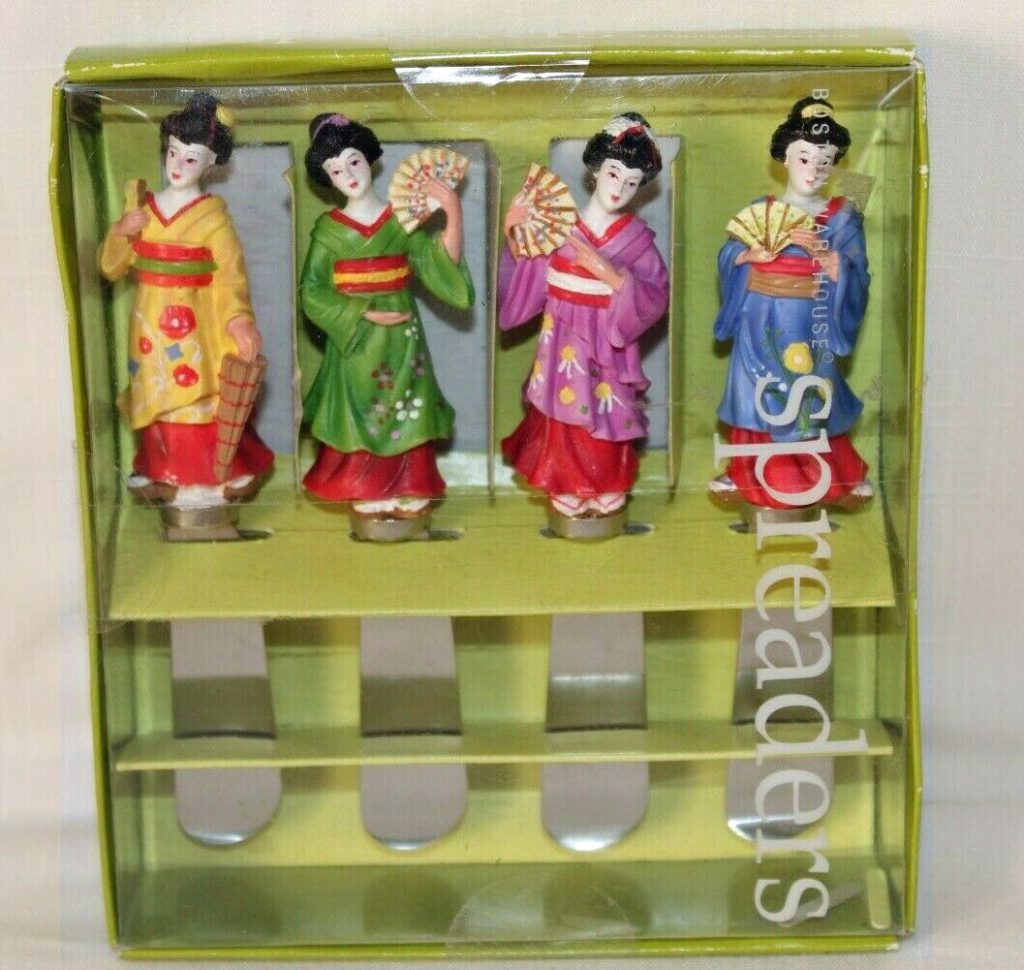
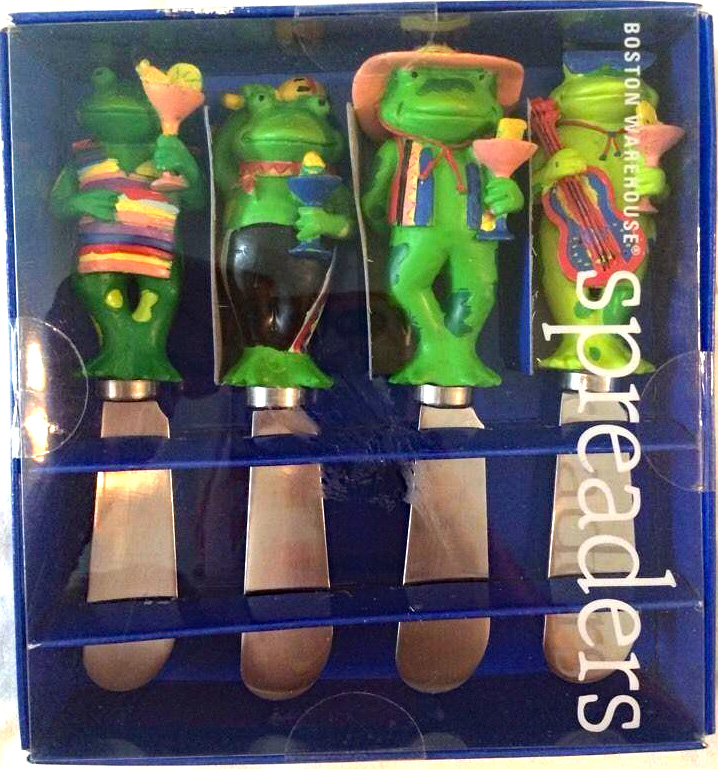
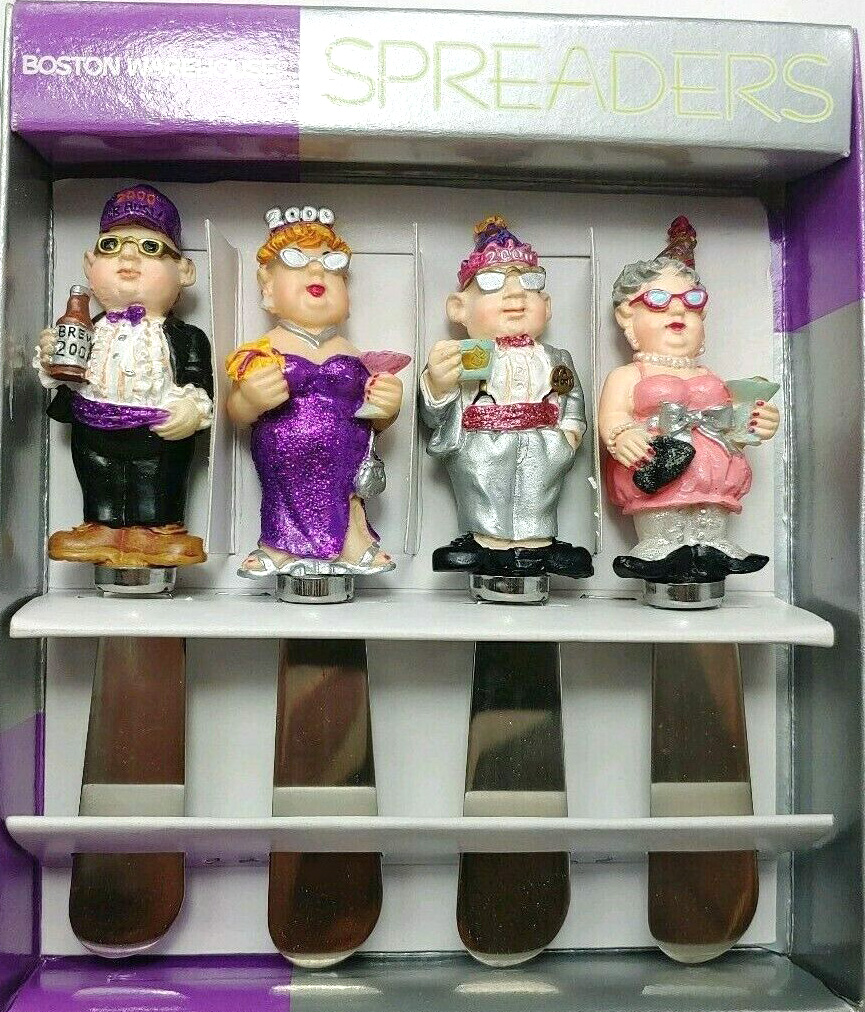
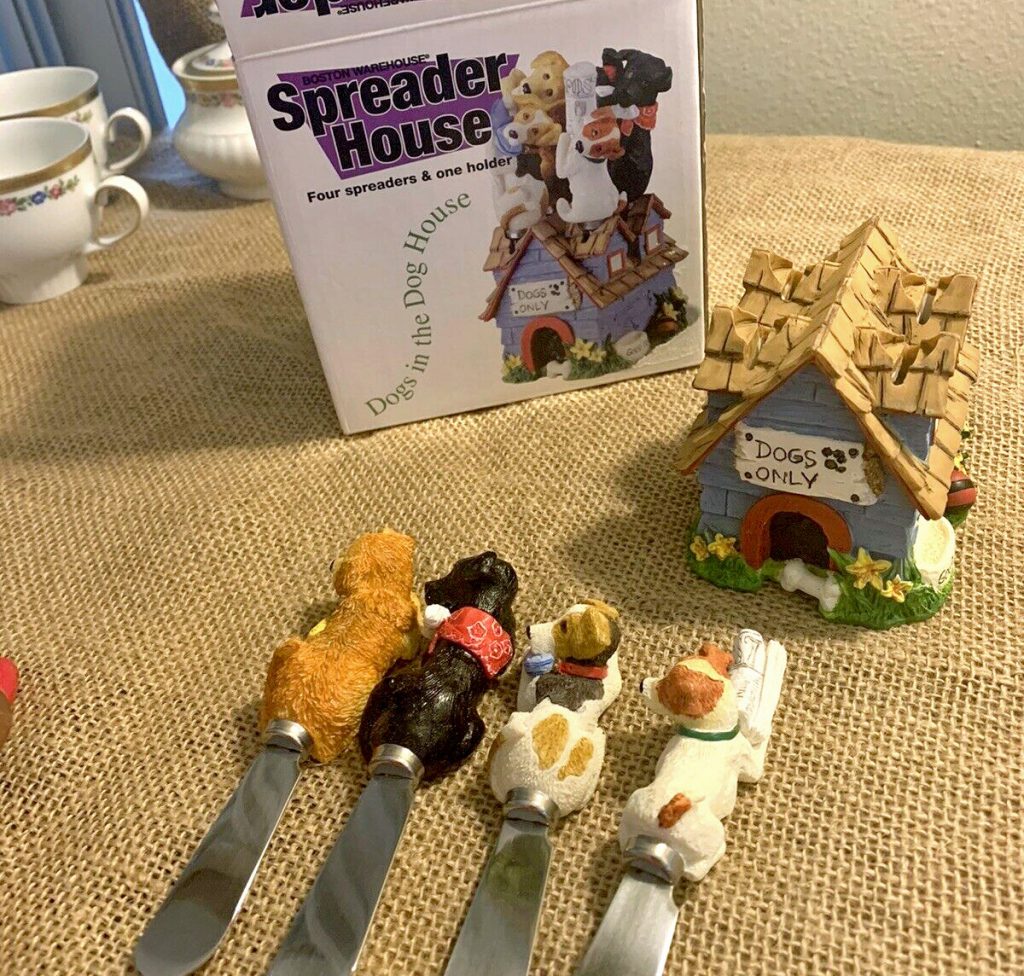
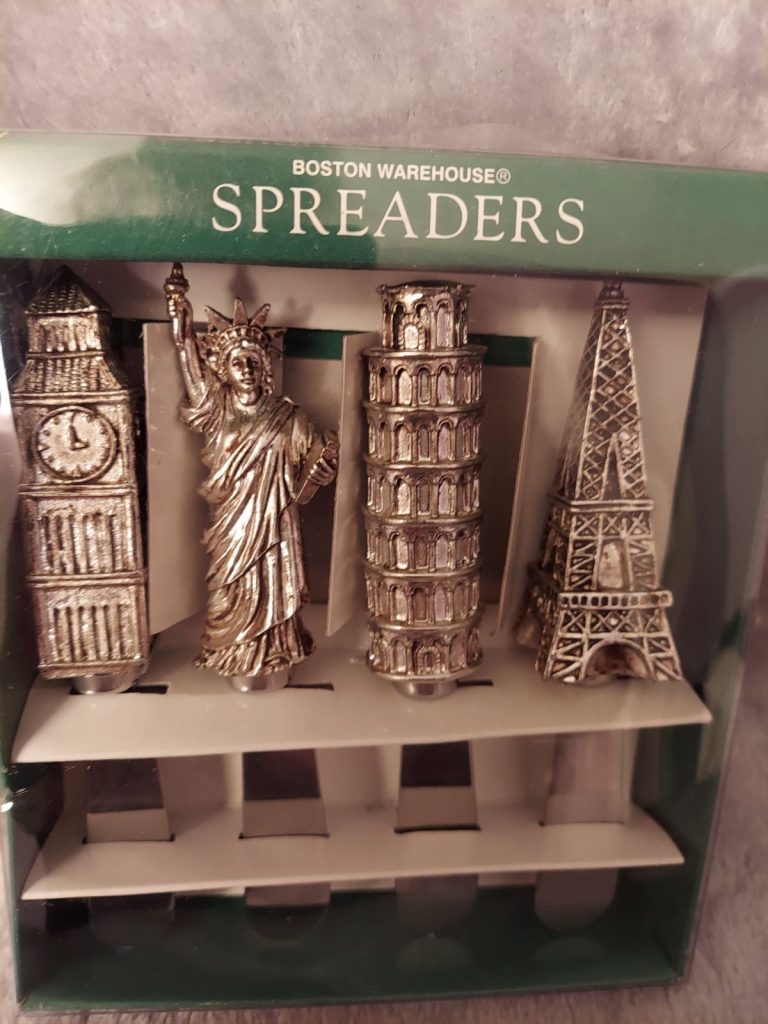
The peak popularity of spreader sets occurred during the five-year period from 1999 to 2004, and sales probably declined after that — although a number of very nice sets were issued toward the end of the Middle Period.
Perhaps the onset of the Great Recession in 2008 finished off the popularity of cheese spreaders, due to less gift-giving during a time of financial stress, or perhaps a trend was simply ending.
Toward the end of the Middle Period, a number of characteristics in spreader set design began to be observed that marked the Late Period, detailed below:
Late Period (2009-2015)
The Boston Warehouse Late Period began around 2009, and continued until roughly 2015. During this period, BW issued far fewer spreader sets, and seemed to simplify the design of their sets. It’s unknown whether the simplification was done to save manufacturing costs in order to lower prices during the recession, or perhaps because simplification was the overall trend in American design. Spreader set design was marked by these characteristics:
- simplified, modern lines replaced the intricate detail of earlier designs
- An increased emphasis on cute and friendly appeal, over realism
- more sets contained four identical spreaders, or spreaders differentiated only by paint colors, instead of four completely different spreaders per set (likely in order to reduce manufacturing costs)
- a number of sets of 2 spreaders, with a wider, flared blade shape, were issued toward the later part of this period (see Modern Period images)
- cardboard cases continued to be designed with eye-catching colors and graphics, with a redesigned Boston Warehouse logo
Here’s a few images of spreader sets that exemplify the design trends during the Late Period:
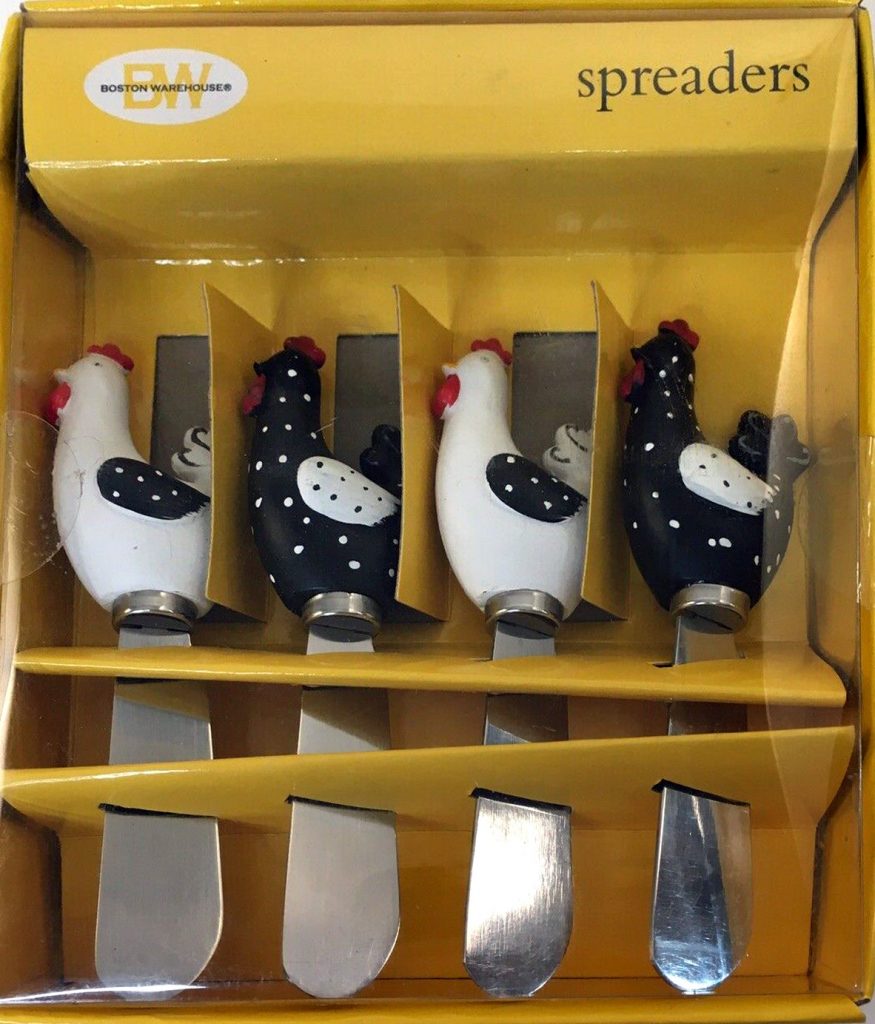
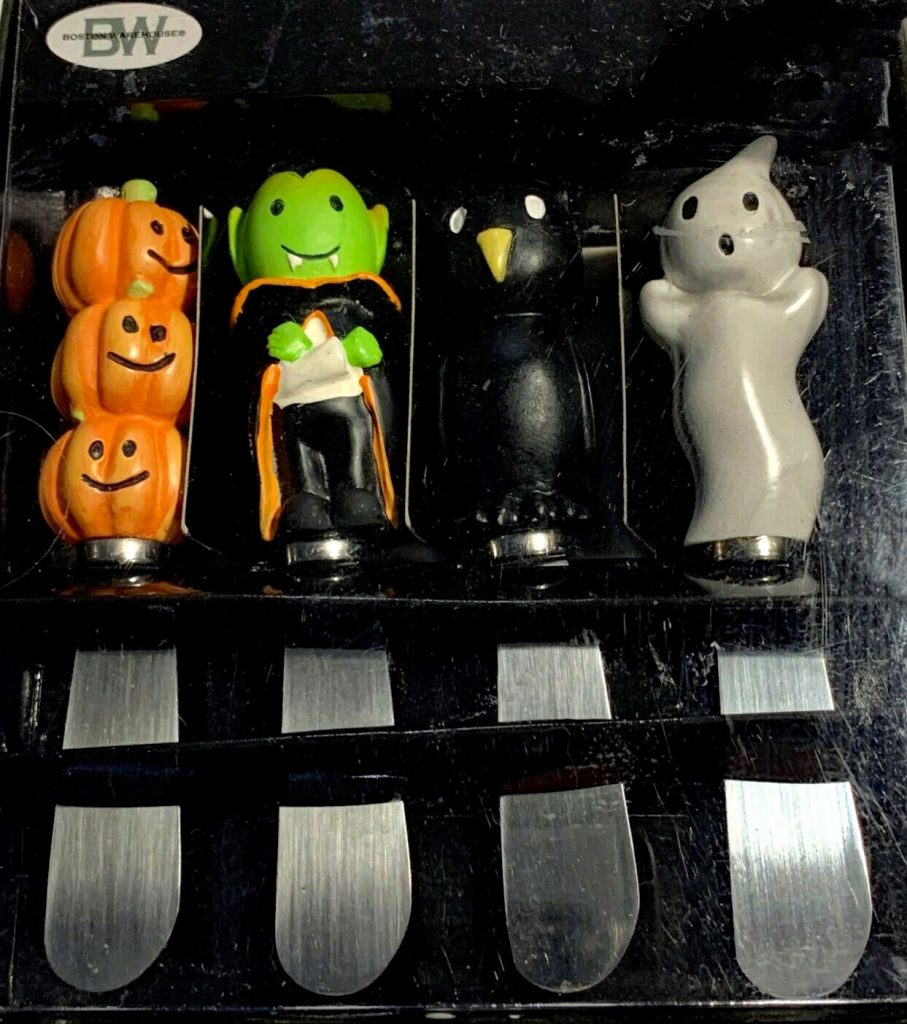
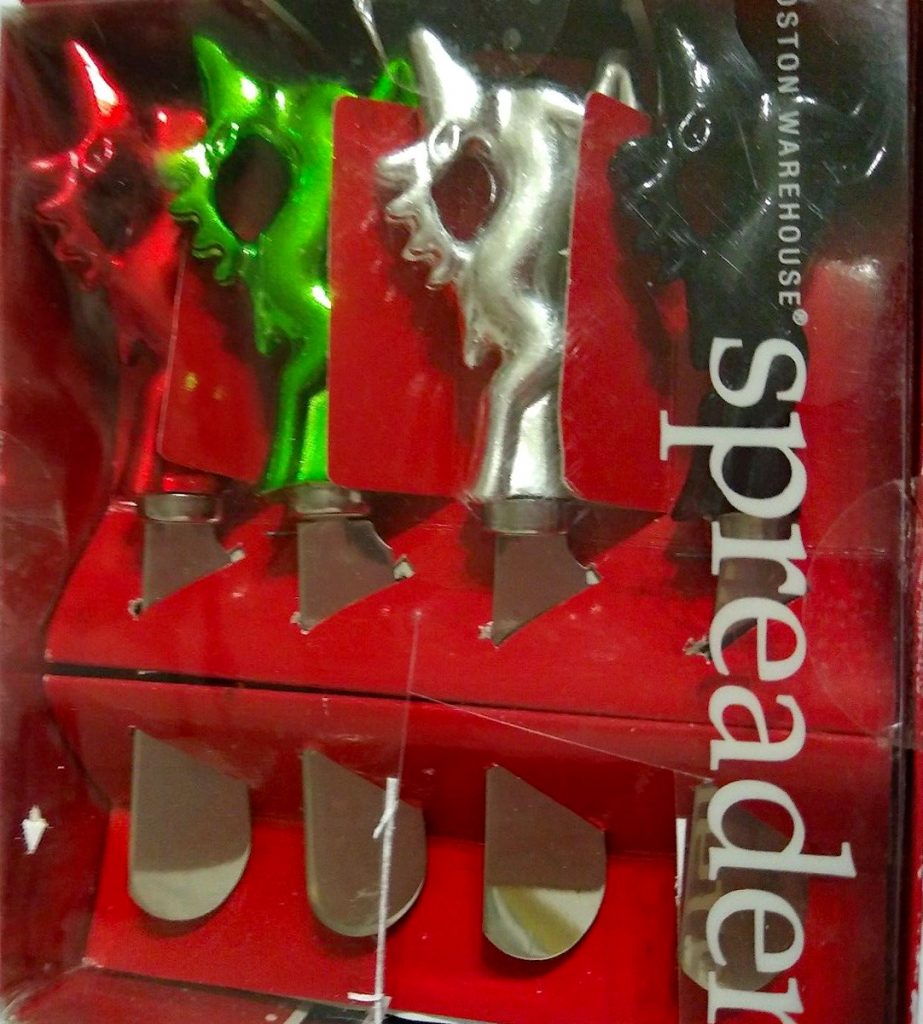
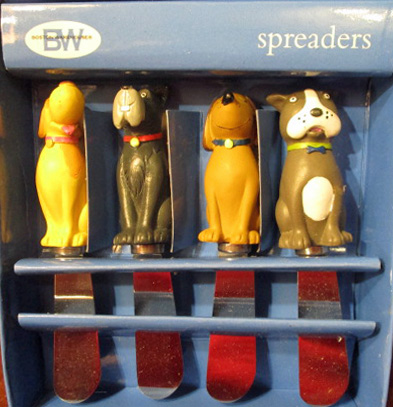
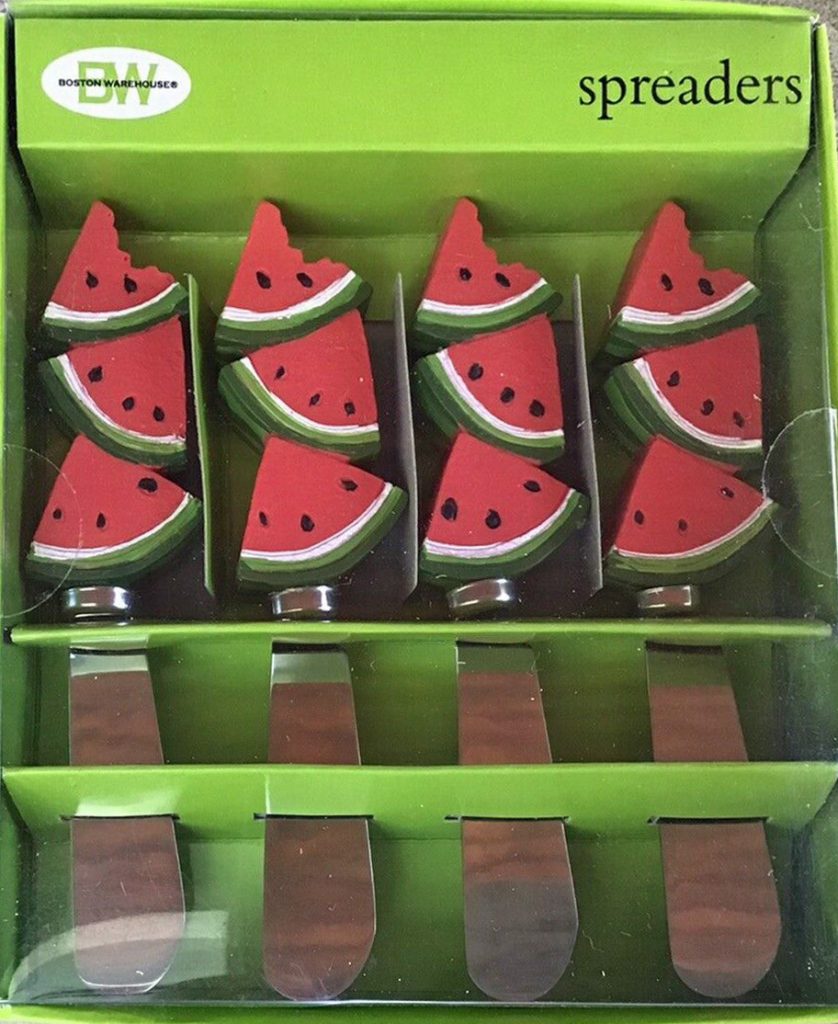
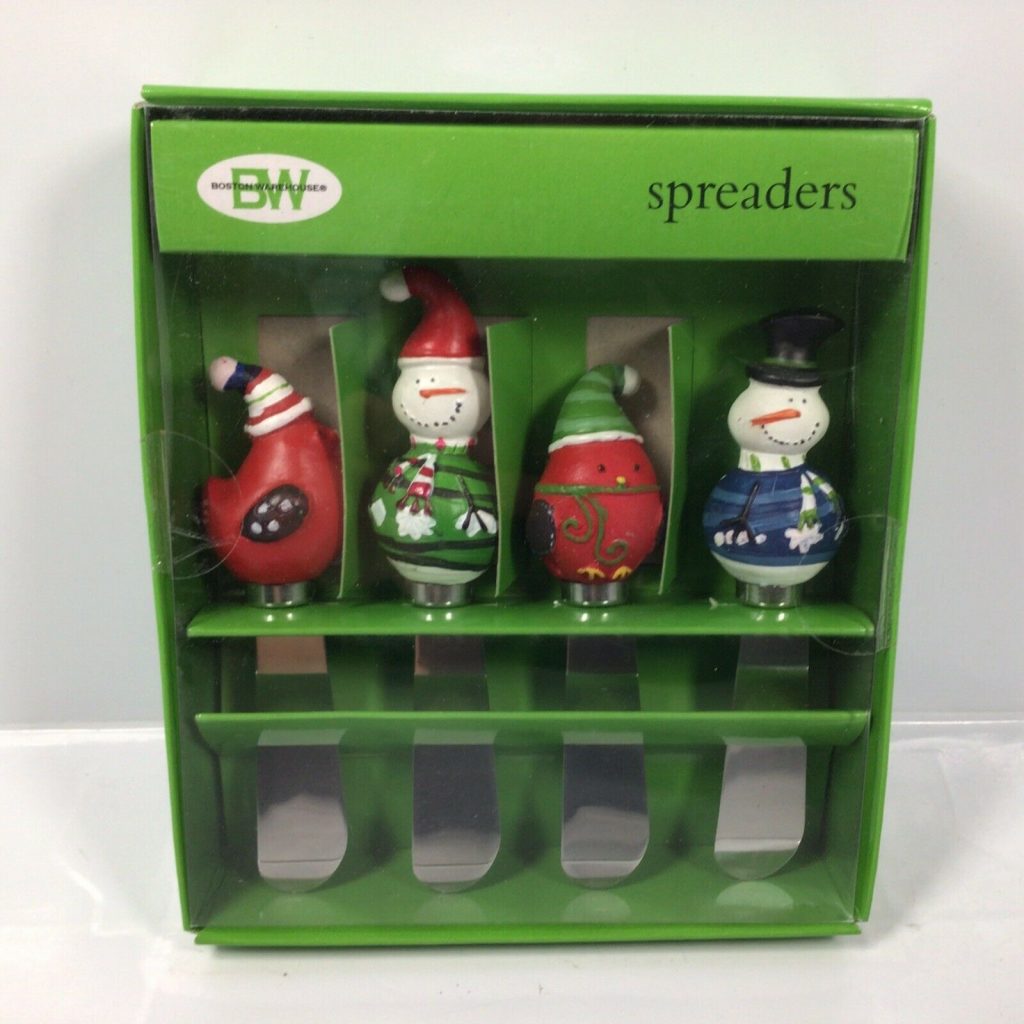
Probably only around 100 spreader sets were issued by Boston Warehouse during this Late Period, and I have only found a few from the final two years of the period of 2014-2015.
Modern (2016 to the Present)
Boston Warehouse has issued few spreader sets since 2015, concentrating instead on dip bowl & spreader sets (a ceramic bowl with one spreader), other kitchenware, and flameless candles (following the company’s purchase of GKI/Bethlehem Lighting, a company that makes seasonal products and LED flameless candle lights).
There is some uncertainty about the dating of spreader sets after 2010: the copyright date given on cardboard cases may reflect the re-issue year for later models, where previously it had shown the original issue date, even for re-issued sets.
The only sets that I have seen with credible issue years after 2015 are several sets of 2 spreaders issued in 2017, shown below. These have wider, flared blades and mostly simplified designs.
In early 2021, Boston Warehouse does not have any spreader sets or even dip bowl & spreader sets listed on their website. It appears that the company has completely moved out of issuing new spreader sets, although they are still selling sets issued in previous years to retailers (probably mostly to online retail sellers, who list them on Amazon.com and other online retail sites).
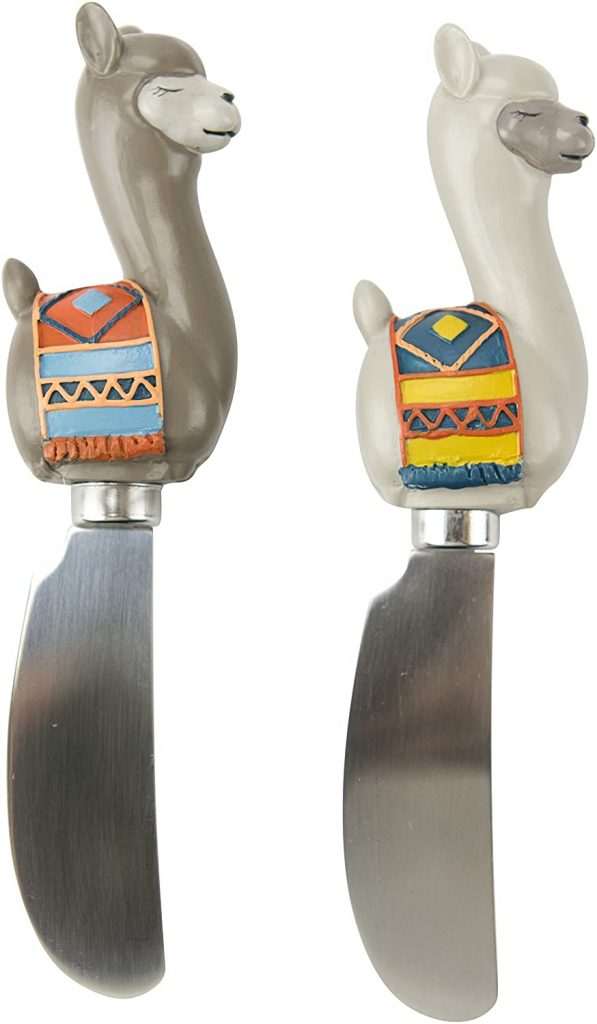
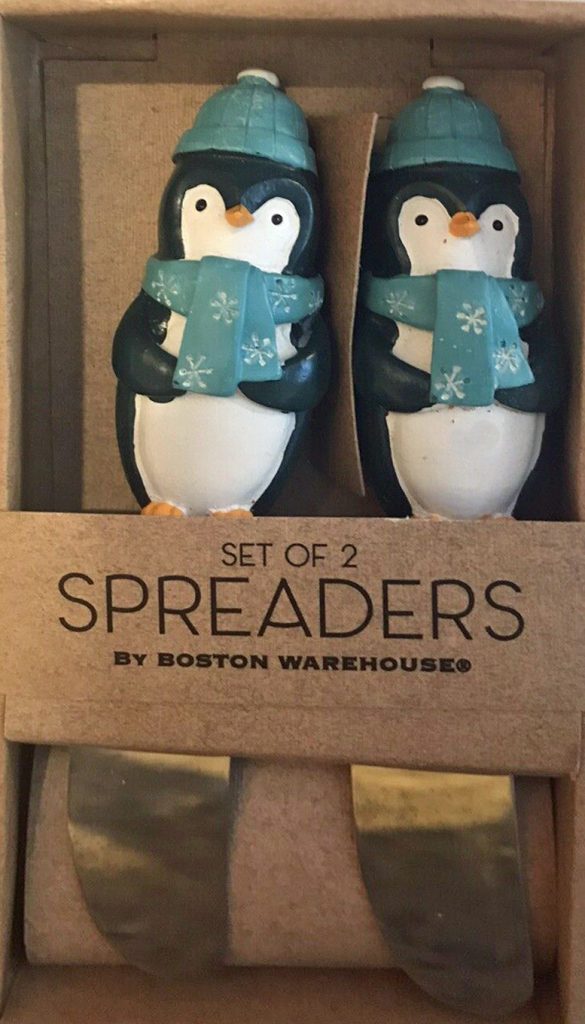
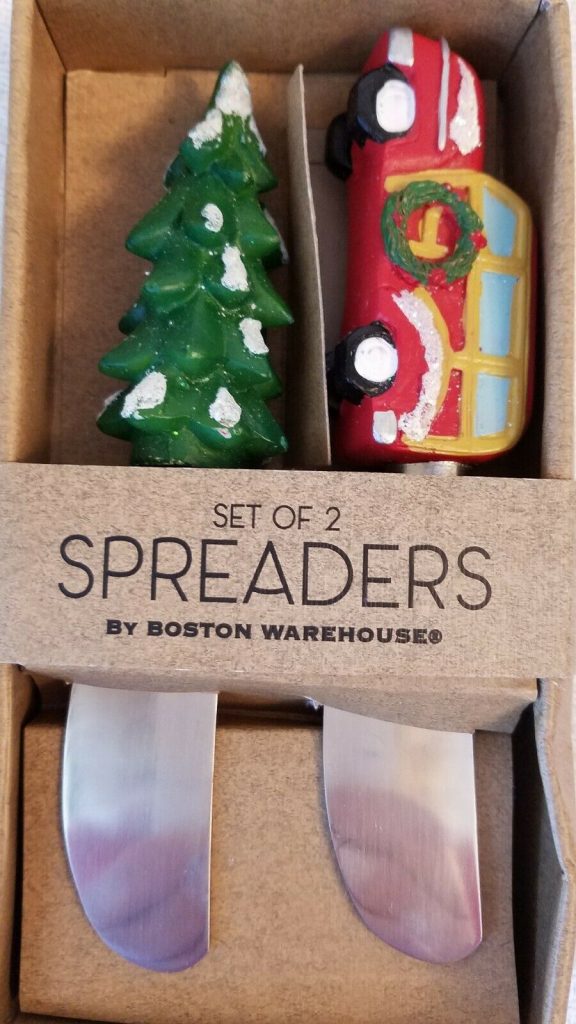
It’s tremendously interesting for collectors like me to observe the changes to spreader set design that occurred over the twenty-five year period that Boston Warehouse issued their sets.
And it’s a tribute to the inventiveness of Boston Warehouse designers that they were able to continually come up with so many different designs (more than 900!) over such a long period, while responding to changing tastes and taking advantage of improved manufacturing technology. These designs deserve to be appreciated once again for their inventiveness.
Thanks for reading!

